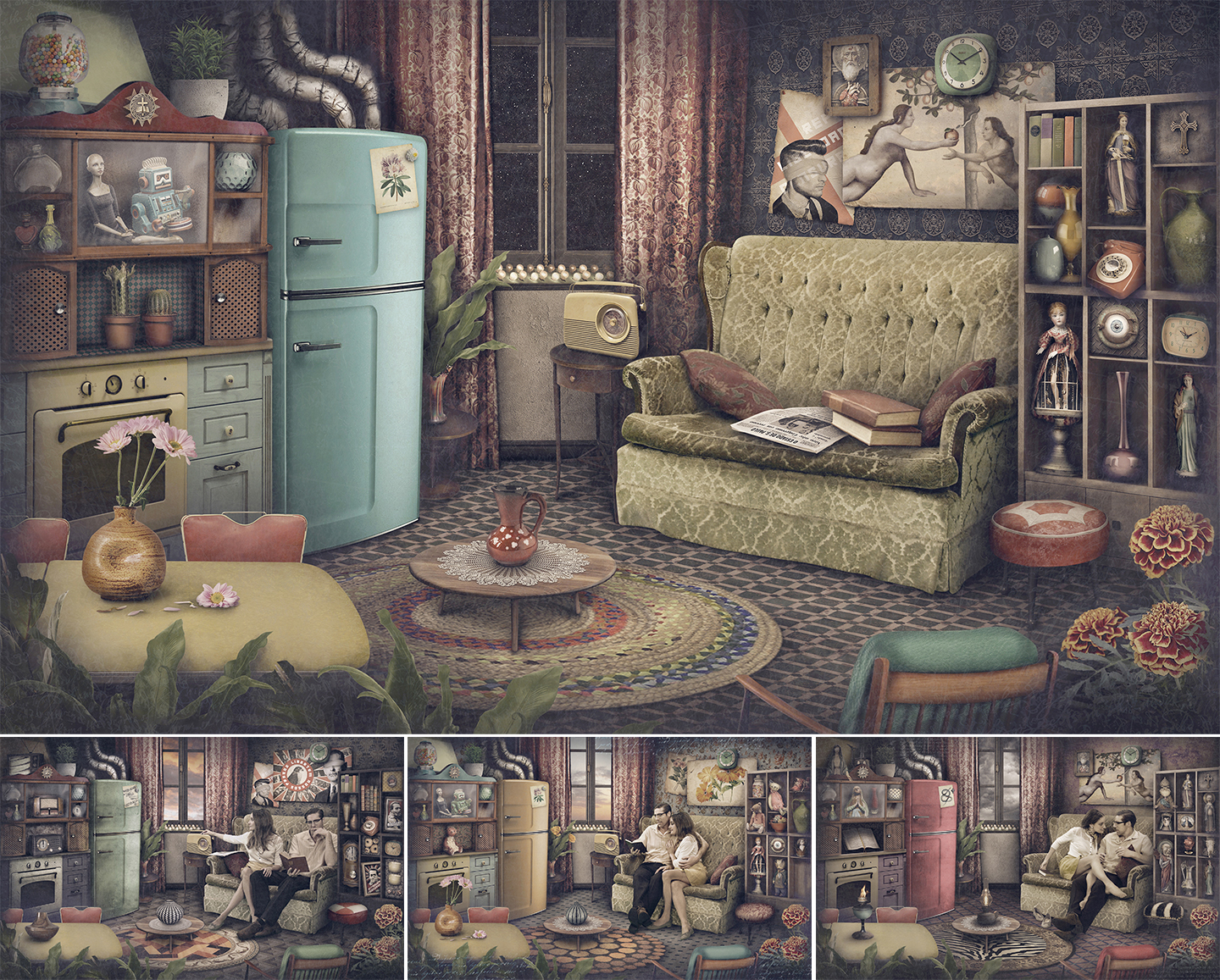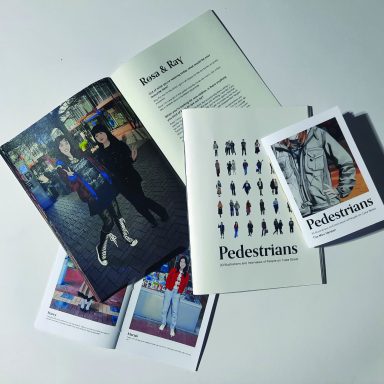Postgraduate Design Research – Tatiana Tavares, AUT
Welcome to Postgraduate Design Research – an opportunity to profile a selection of current design postgraduate students and their projects across our tertiary institutions. This week, we speak with Tatiana Tavares from AUT.
Tatiana Tavares
PhD of Art and Design
Auckland University of Technology


Interactive page from the illustrated Augmented Reality [AR] picture book, Saints of Paradox. When the illustrated printed pages are scanned, the user has the option of selecting one of 3 separate buttons, each activating a different narration. Each saint has an unique monologue, soundscape, video, and animated intrusions that play out over the printed picture.
Tell us about your research.
My current practice-led PhD thesis project explores how narration in a picture book can be expanded through the use of AR technology. The research is focused on the design of a complex, image-led story called ‘Saints of Paradox’. The story concerns a woman who after 40 years in mourning at the loss of her lover in the 1964 Brazilian coup d’état, lives in a room of accumulated memories. One day when the only photograph of her lover breaks, it sets in train a series of strange events.
The book has three optional narrators who can be selected by pressing a button on your mobile device. These are saints whose ‘voice overs’ tell the same story but each distorts details of imagery, sound, movement and meaning in the book, in relation to their different theological positions.
What drove you to this research area?
In Brazil there was a coup d’état in 1964 and many people disappeared. I was born many years later in a lower middleclass suburb of São Paulo. In this world, the fast-pace of living, the smell of cooking and traffic fumes, the upbeat music, and the drugs and violence fused chaotically. I loved the strange and somehow congruous patterns of European, African and indigenous aesthetics that shaped the appearance of the patchy shanty towns I lived and played in. When I was a child, my mother practiced forms of Christian-derived syncretic religion. I spent my afternoons in Candomblé and Umbanda ceremonies, in conversations with spiritual entities, making offerings at cachoeiras (waterfalls). The combination of these inconsistencies has been formative in shaping my artistic aesthetic in the research project.

Working illustrations for the story’s three narrating saints: the Mother of Compassion (humanity), the Father of Realism (pragmatism), and the Father of Orthodoxy (righteous judgement). The saints and the plates in the book are based on Brazilian syncretism. Syncretism refers to the theological merging or attempted reconciliation of, different beliefs or religions systems.
Based on your research at present are there any discoveries that you can share with us?
Conceptually, the project is concerned with storytelling and realismo maravilhoso (a distinctive form of Brazilian magical realism). It looks at permeable divisions between belief and actuality. In developing a creative project that is narratively complex, I have been able to explore this unusual space where the everyday is magical, where theological values distort meaning, and the reader is left with multiple understandings of a single text.

While on the surface we encounter only 10 spreads, each illustration has 3 additional animated, variations (one for each saint), so in total therefore, there are 40 images. The first image (top plate), is essentially in potentia. It may be thought of as a vacant stage set awaiting a saint’s version of the story. The plates below this image are stills from each of the three saint’s animations that demonstrate how they populate the scene with different versions of events.
How has all of this impacted upon your own design practice?
Practice-led inquiry is a relatively recent form of doctoral research. Given the four year (average) duration on a PhD, I have had time to push ideas much further than I normally would. I have asked myself complex questions like, ‘What is the sound of memory?’, ‘What does syncretism look like as a mode of illustration?’, ‘How far can you push complexity in a polyvocal story while still preserving its clarity and emotional impact?’, ‘How can AR technologies be employed to extend the richness of a narrative for adult readers?’
The 50,000 word exegesis that accompanies the project has also enabled me to give ‘voice’ to my design work (both contextually and theoretically). A combination of practice and writing has therefore, resulted in challenges to my traditional way of thinking as a designer. This is because I have begun to think about and exercise a methodology that heightens the chances of creative discovery to explore aspects of my culture, without the constraints of having to meet client’s needs.




